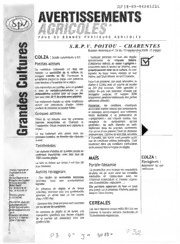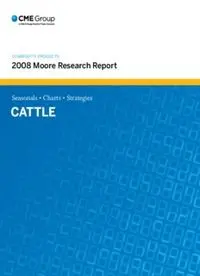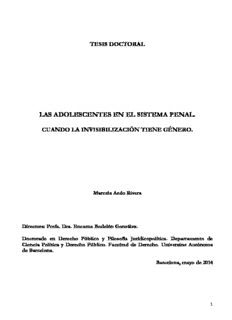
Foundations of Computational, Intelligence Volume 1: Learning and Approximation PDF
Preview Foundations of Computational, Intelligence Volume 1: Learning and Approximation
Aboul-EllaHassanien,AjithAbraham, AthanasiosV.Vasilakos,andWitoldPedrycz(Eds.) FoundationsofComputationalIntelligenceVolume1 StudiesinComputationalIntelligence,Volume201 Editor-in-Chief Prof.JanuszKacprzyk SystemsResearchInstitute PolishAcademyofSciences ul.Newelska6 01-447Warsaw Poland E-mail:kacprzyk@ibspan.waw.pl Furthervolumesofthisseriescanbefoundonour Vol.190.K.R.Venugopal,K.G.SrinivasaandL.M.Patnaik homepage:springer.com SoftComputingforDataMiningApplications,2009 ISBN978-3-642-00192-5 Vol.178.SwagatamDas,AjithAbrahamandAmitKonar Vol.191.ZongWooGeem(Ed.) MetaheuristicClustering,2009 Music-InspiredHarmonySearchAlgorithm,2009 ISBN978-3-540-92172-1 ISBN978-3-642-00184-0 Vol.179.MirceaGh.NegoitaandSorinHintea Bio-InspiredTechnologiesfortheHardwareofAdaptive Vol.192.AgusBudiyono,BambangRiyantoandEndra Systems,2009 Joelianto(Eds.) ISBN978-3-540-76994-1 IntelligentUnmannedSystems:TheoryandApplications,2009 ISBN978-3-642-00263-2 Vol.180.WojciechMitkowskiandJanuszKacprzyk(Eds.) ModellingDynamicsinProcessesandSystems,2009 Vol.193.RaymondChiong(Ed.) ISBN978-3-540-92202-5 Nature-InspiredAlgorithmsforOptimisation,2009 Vol.181.GeorgiosMiaoulisandDimitriPlemenos(Eds.) ISBN978-3-642-00266-3 IntelligentSceneModellingInformationSystems,2009 Vol.194.IanDempsey,MichaelO’NeillandAnthony ISBN978-3-540-92901-7 Brabazon(Eds.) Vol.182.AndrzejBargielaandWitoldPedrycz(Eds.) FoundationsinGrammaticalEvolutionforDynamic Human-CentricInformationProcessingThroughGranular Environments,2009 Modelling,2009 ISBN978-3-642-00313-4 ISBN978-3-540-92915-4 Vol.195.VivekBannoreandLeszekSwierkowski Vol.183.MarcoA.C.PachecoandMarleyM.B.R.Vellasco Iterative-InterpolationSuper-ResolutionImage (Eds.) Reconstruction: IntelligentSystemsinOilFieldDevelopmentunder AComputationallyEfficientTechnique,2009 Uncertainty,2009 ISBN978-3-642-00384-4 ISBN978-3-540-92999-4 Vol.184.LjupcoKocarev,ZbigniewGaliasandShiguoLian Vol.196.ValentinaEmiliaBalas,Ja´nosFodorand (Eds.) AnnamáriaR.Va´rkonyi-Ko´czy(Eds.) IntelligentComputingBasedonChaos,2009 SoftComputingBasedModeling ISBN978-3-540-95971-7 inIntelligentSystems,2009 ISBN978-3-642-00447-6 Vol.185.AnthonyBrabazonandMichaelO’Neill(Eds.) NaturalComputinginComputationalFinance,2009 Vol.197.MauroBirattari ISBN978-3-540-95973-1 TuningMetaheuristics,2009 ISBN978-3-642-00482-7 Vol.186.Chi-KeongGohandKayChenTan EvolutionaryMulti-objectiveOptimizationinUncertain Vol.198.Efre´nMezura-Montes(Ed.) Environments,2009 Constraint-HandlinginEvolutionaryOptimization,2009 ISBN978-3-540-95975-5 ISBN978-3-642-00618-0 Vol.187.MitsuoGen,DavidGreen,OsamuKatai,BobMcKay, Vol.199.KazumiNakamatsu,GloriaPhillips-Wren, AkiraNamatame,RuhulA.SarkerandByoung-TakZhang LakhmiC.Jain,andRobertJ.Howlett(Eds.) (Eds.) NewAdvancesinIntelligentDecisionTechnologies,2009 IntelligentandEvolutionarySystems,2009 ISBN978-3-642-00908-2 ISBN978-3-540-95977-9 Vol.188.AgustínGutiérrezandSantiagoMarco(Eds.) Vol.200.DimitriPlemenosandGeorgiosMiaoulis BiologicallyInspiredSignalProcessingforChemicalSensing, VisualComplexityandIntelligentComputerGraphics 2009 TechniquesEnhancements,2009 ISBN978-3-642-00175-8 ISBN978-3-642-01258-7 Vol.189.SallyMcClean,PeterMillard,EliaEl-Darziand Vol.201.Aboul-EllaHassanien,AjithAbraham, ChrisNugent(Eds.) AthanasiosV.Vasilakos,andWitoldPedrycz(Eds.) IntelligentPatientManagement,2009 FoundationsofComputationalIntelligenceVolume1,2009 ISBN978-3-642-00178-9 ISBN978-3-642-01081-1 Aboul-Ella Hassanien,AjithAbraham, AthanasiosV.Vasilakos,andWitold Pedrycz (Eds.) Foundations of Computational Intelligence Volume 1 Learning and Approximation 123 Prof.Aboul-EllaHassanien AthanasiosV.Vasilakos CollegeofBusinessAdministration DepartmentofComputerand QuantitativeandInformationSystem TelecommunicationsEngineering Department UniversityofWesternMacedonia KuwaitUniversity AgiosDimitriosPark P.O.Box5486 50100Kozani Safat,13055 Greece Kuwait E-mail:vasilako@ath.forthnet.gr E-mail:abo@cba.edu.kw Prof.Dr.WitoldPedrycz Dr.AjithAbraham UniversityofAlberta NorwegianUniversityofScience& Dept.ElectricalandComputerEngineering Technology Edmonton,AlbertaT6J2V4 CenterofExcellenceforQuantifiable Canada QualityofService E-mail:pedrycz@ee.ualberta.ca O.S.Bragstadsplass2E 7491Trondheim Norway E-mail:ajith.abraham@ieee.org ISBN 978-3-642-01081-1 e-ISBN978-3-642-01082-8 DOI 10.1007/978-3-642-01082-8 Studiesin Computational Intelligence ISSN1860949X Library of Congress Control Number:applied for (cid:2)c 2009 Springer-VerlagBerlin Heidelberg Thisworkissubjecttocopyright.Allrightsarereserved,whetherthewholeorpart of the material is concerned, specifically therights of translation, reprinting,reuse ofillustrations, recitation,broadcasting, reproductiononmicrofilm orinanyother way, and storage in data banks. Duplication of this publication or parts thereof is permittedonlyundertheprovisionsoftheGermanCopyrightLawofSeptember9, 1965, in its current version, and permission for use must always be obtained from Springer. Violations are liable to prosecution undertheGerman Copyright Law. The use of general descriptive names, registered names, trademarks, etc. in this publication does not imply, even in the absence of a specific statement, that such names are exempt from the relevant protective laws and regulations and therefore free for general use. Typeset&CoverDesign:ScientificPublishing ServicesPvt. Ltd., Chennai, India. Printed in acid-free paper 9 8 7 6 5 4 3 2 1 springer.com Preface Foundations of Computational Intelligence Volume 1: Learning and Approximation: Theoretical Foundations and Applications Learning methods and approximation algorithms are fundamental tools that deal with computationally hard problems and problems in which the input is gradually disclosed over time. Both kinds of problems have a large number of applications arising from a variety of fields, such as algorithmic game theory, approximation classes, coloring and partitioning, competitive analysis, computational finance, cuts and connectivity, inapproximability results, mechanism design, network design, packing and covering, paradigms for design and analysis of approxima- tion and online algorithms, randomization techniques, real-world applications, scheduling problems and so on. The past years have witnessed a large number of interesting applications using various techniques of Computational Intelligence such as rough sets, connectionist learning; fuzzy logic; evolutionary computing; artificial immune systems; swarm intelligence; reinforcement learning, intelligent multimedia processing etc.. In spite of numerous successful applications of Com- putational Intelligence in business and industry, it is sometimes difficult to explain the performance of these techniques and algorithms from a theoretical perspective. Therefore, we encouraged authors to present original ideas dealing with the incor- poration of different mechanisms of Computational Intelligent dealing with Learn- ing and Approximation algorithms and underlying processes. This edited volume comprises 15 chapters, including an overview chapter, which provides an up-to-date and state-of-the art research on the application of Computational Intelligence for learning and approximation. The book is divided into 4 main parts: Part-I: Function Approximation Part-II: Connectionist Learning Part-III: Knowledge Representation and Acquisition Part-IV: Learning and Visualization VI Preface Part I entitled Function Approximation contains four chapters that deal with several techniques of Computational Intelligence in application to function ap- proximation and machine learning strategies. In Chapter 1, “Machine Learning and Genetic Regulatory Networks: A Review and a Roadmap”, Fogelberg and Palade, review the Genetic Regulatory Networks (GRNs) field and offer an excellent roadmap for new researchers to the field. Authors describe the relevant theoretical and empirical biochemistry and the dif- ferent types of GRN inference. They also discuss the data that can be used to carry out GRN inference. With this background biologically-centered material, the chapter surveys previous applications of machine learning techniques and compu- tational intelligence to the domain of the GRNs. It describes clustering, logical and mathematical formalisms, Bayesian approaches and some combinations of those. All techniques are shortly explained theoretically, and important examples of previous research using each are highlighted. Chapter 2, “Automatic Approximation of Expensive Functions with Active Learning”, by Gorissen et al. presents a fully automated and integrated global surrogate modeling methodology for regression modeling and active learning. The work brings together important insights coming from distributed systems, artificial intelligence, and modeling and simulation, and shows a variety of applications. The merits of this approach are illustrated with several examples and several sur- rogate model types. In Chapter 3, “New Multi-Objective Algorithms for Neural Network Training applied to Genomic Classification Data” Costa et.al., present the LASSO multi- objective algorithm. The algorithm is able to develop solutions of high generaliza- tion capabilities for regression and classification problems. The method was first compared with the original Multi-Objective and Early-Stopping algorithms and it achieved better results with high generalization responses and reduced topology. To measure the effective number of weights for each algorithm a random selection procedure were applied to both Multiobjective algorithm (MOBJ) and Early- Stopping solutions. Experimental results illustrate the potential of the algorithm to train and to select compact models. In Chapter 4, “An Evolutionary Approximation for the Coefficients of Decision Functions within a Support Vector Machine Learning Strategy”, authored by Ruxandra et al. bring support vector machines together with evolutionary compu- tation, with the aim to offer a simplified solving version for the central optimiza- tion problem of determining the equation of the hyperplane deriving from support vector learning. The evolutionary approach suggested in this chapter resolves the complexity of the optimizer, opens the 'black-box' of support vector training and breaks the limits of the canonical solving component. Part II entitled Connectionist Learning contains Six chapters that describe sev- eral computational intelligence techniques in Connectionist Learning including Meta-Learning, Entropy Guided Transformation, Artificial Development and Multi-Agent Architecture. In Chapter 5, “Meta-learning and Neurocomputing – A New Perspective for Computational Intelligence”, Castiello deals with the analysis of computational mechanisms of induction in order to assess the potentiality of meta-learning Preface VII methods versus the common base-learning practices. Firstly a formal investigation of inductive mechanisms is presented, sketching a distinction between fixed and dynamical bias learning. Then a survey is presented with suggestions and exam- ples, which have been proposed in the literature to increase the efficiency of common learning algorithms. To explore the meta-learning possibilities of neural network systems, knowledge-based neurocomputing techniques are also considered. Chapter 6, by Mashinchi et al. “Three-term Fuzzy Back-propagation”, a fuzzy proportional factor is added to the fuzzy BP's iteration scheme to enhance the convergence speed. The added factor makes the proposed method more dependant on the distance of actual outputs and desired ones. Thus in contrast with the con- ventional fuzzy BP, when the slop of error function is very close to zero, the algo- rithm does not necessarily return almost the same weights for the next iteration. According to the simulation's results, the proposed method is superior to the fuzzy BP in terms of performance error. Dos Santos and Milidiu in Chapter 7, “Entropy Guided Transformation Learn- ing”, presents Entropy Guided Transformation Learning (ETL)”, propose a new machine learning algorithm for classification tasks. ETL generalizes Transforma- tion Based Learning (TBL) by automatically solving the TBL bottleneck: the construction of good template sets. ETL uses the information gain in order to select the feature combinations that provide good template sets. Authors describe the application of ETL to two language independent Text Mining pre-processing tasks: part-of-speech tagging and phrase chunking. Artificial Development is a field of Evolutionary Computation inspired by the developmental processes and cellular growth seen in nature. Multiple models of artificial development have been proposed in the past, which can be broadly di- vided into those based on biochemical processes and those based on a high level grammar. Chapter 8, “Artificial Development”, by Chavoya covers the main re- search areas pertaining to artificial development with an emphasis toward the systems based on artificial regulatory networks. To this end, a short introduction to biological gene regulatory networks and their relationship with development is first presented. The sections on the various artificial development models are followed by a section on the canonical problem in artificial and natural develop- ment known as the French flag problem. In Chapter 9, “Robust Training of Artificial Feed-forward Neural Networks” by Moumen et. al. present several methods to enhance the robustness of neural net- work training algorithms. First, employing a family of robust statistics estima- tors, commonly known as M-estimators, the back-propagation algorithm is re- viewed and evaluated for the task of function approximation and dynamical model identification. As these M-estimators sometimes do not have sufficient insensitiv- ity to data outliers, the chapter next resorts to the statistically more robust estima- tor of the least median of squares, and develops a stochastic algorithm to minimize a related cost function. Chapter 10, “Workload Assignment In Production Networks By Multi-Agent Architecture”, authored by Renna and Argoneto deals with low level production planning with the of allocating the orders to the distributed plant. The orders VIII Preface assigned by the medium level have to be allocated to the plant to manufacture the products. Coordination among the plants is a crucial activity to pursue high level performance. In this context, three approaches for coordinating production plan- ning activities within production networks are proposed. Moreover, the proposed approaches are modeled and designed by a Multi Agent negotiation model. In order to test the functionality of the proposed agent based distributed architecture for distributed production planning; a proper simulation environment has been developed. Knowledge Representation and Acquisition is the Third Part of this Volume. It contains two chapters discussing some computational approaches in knowledge representation. Chapter 11, “Extensions to Knowledge Acquisition and Effect of Multimodal Representation in Unsupervised Learning” by Daswin et al. present the advances made in the unsupervised learning paradigm (self organizing methods) and its potential in realizing artificial cognitive machines. The initial Sections delineate intricacies of the process of learning in humans with an articulate discussion of the function of thought and the function of memory. The self organizing method and the biological rationalizations that led to its development are explored in the sec- ond section. Further, the focus is shifted to the effect of structure restrictions on unsupervised learning and the enhancements resulting from a structure adapting learning algorithm. New means of knowledge acquisition through adaptive unsu- pervised learning algorithm and the contribution of multimodal representation of inputs to unsupervised learning are also illustrated. In Chapter 12, “A New Implementation for Neural Networks in Fourier-Space” by El-Bakry and Hamada, presents fast neural networks for pattern detection. Such processors are designed based on cross correlation in the frequency domain between the input image and the input weights of neural networks. This approach is developed to reduce the computational steps required by these fast neural net- works during the search process. The principle of divide and conquer strategy is applied through image decomposition. Each image is divided into small in size sub-images and then each one is tested separately by using a single fast neural processor. Furthermore, faster pattern detection is obtained by using parallel proc- essing techniques to test the resulting sub-images at the same time using the same number of fast neural networks. The Final Part of the book deals with the Learning and Visualization. It con- tains three chapters, which discusses the dissimilarity analysis, dynamic Self- Organizing Maps and Hybrid Learning approach. In Chapter 13, “Dissimilarity Analysis and Application to Visual Compari- sons”, by Aupetit et al. discuss the embedding of a set of data into a vector space when an unconditional pairwise dissimilarity w between data. The vector space is endowed with a suitable pseudo-Euclidean structure and the data embed- ding is built by extending the classical kernel principal component analysis. This embedding is unique, up to an isomorphism, and injective if and only if w sepa- rates the data. This construction takes advantage of axis corresponding to negative Eigen values to develop pseudo-Euclidean scatter plot matrix representations. This Preface IX new visual tool is applied to compare various dissimilarities between hidden Markov models built from person’s faces. Chapter 14, “Dynamic Self-Organising Maps: Theory, Methods and Applica- tions” authored by Arthur et al. provide a comprehensive description and theory of Growing Self-Organising Maps (GSOM), which also includes recent theoretical developments. Methods of clustering and identifying clusters using GSOM are also introduced here together with their related applications and results. In addi- tion, an encompassing domain for GSOM, applications that have been explored in this book chapter range from bioinformatics to sensor networks to manufacturing processes. In Chapter 15, “Hybrid Learning Enhancement of RBF Network with Particle Swarm Optimization”, by Noman et.al. propose RBF Network hybrid learning with Particle Swarm Optimization (PSO) for better convergence, error rates and classification results. RBF Network hybrid learning involves two phases. The first phase is a structure identification, in which unsupervised learning is exploited to determine the RBF centers and widths. This is done by executing different algo- rithms such as k-mean clustering and standard derivation respectively. The second phase is parameters estimation, in which supervised learning is implemented to establish the connections weights between the hidden layer and the output layer. This is done by performing different algorithms such as Least Mean Squares (LMS) and gradient based methods. The incorporation of PSO in RBF Network hybrid learning is accomplished by optimizing the centers, the widths and the weights of RBF Network. We are very much grateful to the authors of this volume and to the reviewers for their great effort by reviewing and providing useful feedback to the authors. The editors would like to express thanks to Dr. Thomas Ditzinger (Springer Engi- neering Inhouse Editor, Studies in Computational Intelligence Series), Professor Janusz Kacprzyk (Editor-in-Chief, Springer Studies in Computational Intelligence Series) and Ms. Heather King (Editorial Assistant, Springer Verlag, Heidelberg) for the editorial assistance and excellent collaboration to produce this important scientific work. We hope that the reader will share our joy and will find the volume useful December 2008 Aboul Ella Hassanien, Egypt Ajith Abraham, Trondheim, Norway Athanasios V. Vasilakos, Greece Witold Pedrycz, Canada Contents Part I: Function Approximation Machine Learning and Genetic Regulatory Networks: A Review and a Roadmap ..................................... 3 Christopher Fogelberg, Vasile Palade Automatic Approximation of Expensive Functions with Active Learning ............................................. 35 Dirk Gorissen, Karel Crombecq, Ivo Couckuyt, Tom Dhaene New Multi-Objective Algorithms for Neural Network Training Applied to Genomic Classification Data ............ 63 Marcelo Costa, Thiago Rodrigues, Euler Horta, Antoˆnio Braga, Carmen Pataro, Ren´e Natowicz, Roberto Incitti, Roman Rouzier, Arben C¸ela An Evolutionary Approximation for the Coefficients of Decision Functions within a Support Vector Machine Learning Strategy ........................................... 83 Ruxandra Stoean, Mike Preuss, Catalin Stoean, Elia El-Darzi, D. Dumitrescu Part II: Connectionist Learning Meta-learning and Neurocomputing – A New Perspective for Computational Intelligence............................... 117 Ciro Castiello
Description:The list of books you might like

$100m Offers

The Sweetest Oblivion (Made Book 1)

Can’t Hurt Me: Master Your Mind and Defy the Odds

The Spanish Love Deception

Inverse Sturm-Liouville Problems

Anmerkungen zur placida-Gruppe der Gattung Ambulyx Westwood, 1847 mit Beschreibung einer neuen Art

Avertissements Agricoles - Grandes cultures - Ile de France - 2006 - 14

Greek Government Gazette: Part 4, 2006 no. 479

Hoard's Dairyman 2010: Vol 155 Index

Avertissements Agricoles - Grandes cultures - Poitou Charentes - 2006 - 24

DTIC ADA520646: War Gaming: Space Perspective

Fundamentals of Risk Management: Understanding, Evaluating and Implementing Effective Enterprise Risk Management

DTIC ADA519352: China's Aircraft Carrier Dilemma

Childlife In Japan And Japanese Child Stories by Mrs M Chaplin Ayrton

Spenser Newsletter 1993: Vol 24 Index

Cathalina at Greycliff by Harriet Pyne Grove

Cage Aquaculture in Asia

Invisible Countries: Journeys to the Edge of Nationhood

Nidification of Dwarf Whistler Pachycare flavogriseum, a little-known New Guinea endemic

Historical Live Cattle/Feeder Cattle Report

Karyotypes of the Neotropical pseudoscorpions Semeiochernes armiger and Cordylochernes scorpioides (Pseudoscorpiones: Chernetidae)



